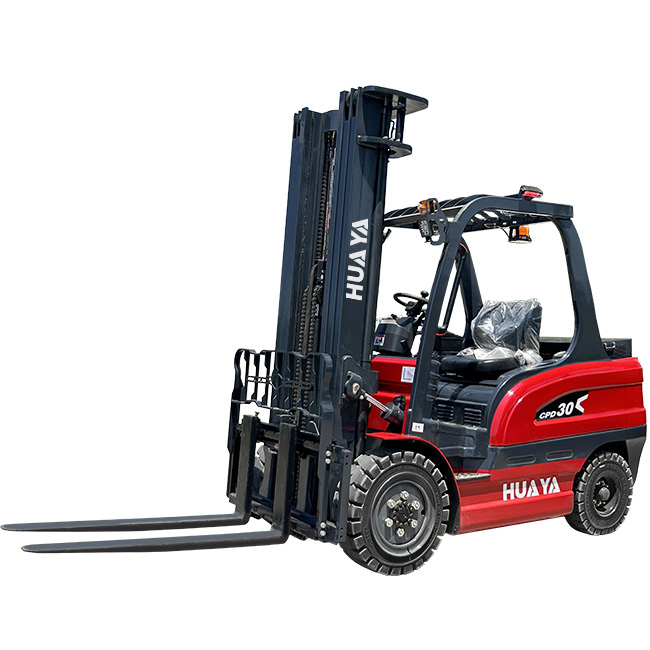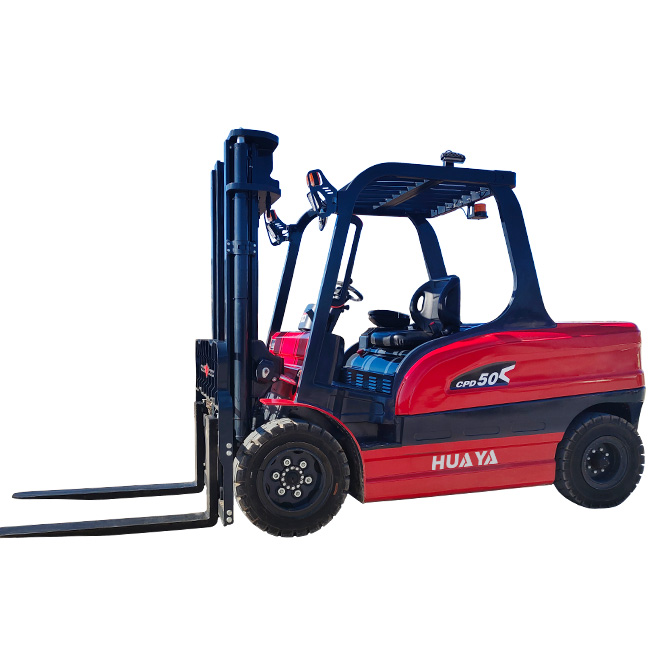Can You Disclaim EPA on an Electric Forklift?
08 Aug 2025
When people ask, “Can you disclaim EPA on an electric forklift?” they usually have one of two things in mind: either they want to know whether electric forklifts are subject to the U.S. Environmental Protection Agency’s (EPA) emission rules, or they’re asking whether a manufacturer, seller, or owner can claim an EPA “disclaimer” (exemption or avoidance of regulation). The short answer: you can’t simply opt out of environmental law, but electric forklifts do interact with EPA rules differently than internal-combustion forklifts. This article explains what that means, practically, and with advice you can use whether you’re a fleet manager, dealer, or buyer.
What “disclaims EPA” typically means
People use the phrase “disclaim EPA” in a few ways:
Claiming an exemption — saying a vehicle or equipment is exempt from a specific EPA rule.
Avoiding labeling/claims — omitting EPA-related labels, statements, or certifications.
Asserting “no EPA oversight needed” — assuming EPA rules don’t apply because the equipment is electric.
None of these are safe to assume. Regulations are carved by activity and substance, not just engine type. Electric forklifts avoid engine-emission rules that target combustion engines, but they remain subject to other federal, state, and local environmental and safety rules — especially around batteries, charging, and disposal.
Why electric forklifts are different from combustion forklifts (but not regulation-free)
1. No tailpipe emissions — different EPA focus
Electric forklifts produce no tailpipe exhaust, so they aren’t subject to many EPA rules designed specifically for internal combustion engines (e.g., engine emission standards under the Clean Air Act aimed at hydrocarbons, NOx, particulates from diesel or gasoline engines). That’s why many operators can market electric forklifts as “zero tailpipe emissions.”
2. Battery systems introduce other regulatory concerns
Batteries (lead-acid, lithium-ion, or others) shift regulatory attention to:
Hazardous waste and recycling regulations (resource recovery, proper disposal of battery materials).
Spill prevention and secondary containment for lead-acid battery electrolyte.
Transportation rules for shipping batteries — DOT regulations intersect with EPA and state rules.
Air-quality or fire safety rules related to battery charging rooms, ventilation, and fire-suppression requirements.
3. Electrical equipment and workplace rules
OSHA, local fire codes, and state environmental agencies will have requirements for charging stations, ventilation, and battery handling. Those aren’t EPA rules specifically but are part of the compliance landscape.
Labeling, claims, and marketing — what you can and should say
You can truthfully state that an electric forklift has zero tailpipe emissions, or that it meets certain emissions or environmental standards — if those statements are accurate and not misleading. Avoid wording that implies broader regulatory non-applicability (e.g., “EPA exempt” or “EPA not applicable”) without verification.
Best practices:
Use accurate, narrowly framed phrases: “zero tailpipe emissions”, “meets applicable state and federal environmental requirements”.
Don’t claim EPA exemptions unless you have a documented legal basis.
Keep records of certifications, MSDS/SDS for batteries, and disposal/recycling plans.
Battery disposal, recycling & EPA-related rules you must consider
Even though the EPA’s engine-emissions focus may not apply, batteries are a major environmental issue:
Lead-acid batteries: Highly recyclable, but considered hazardous when discarded. Proper recycling and handling reduce EPA liability and state enforcement risk.
Lithium-ion batteries: Growing in use; special handling for thermal runaway, recycling, and transport is essential.
SDS and recordkeeping: Maintain Safety Data Sheets and disposal records. Some state programs require notification or registration for large inventories of batteries.
Spill response plans: For lead-acid electrolyte, have neutralization and cleanup procedures.
When the EPA does matter for electric forklifts
Stationary emissions & electricity source: If your site’s backup generators, boilers, or other equipment are subject to EPA rules, that can indirectly affect your charging operations (e.g., reliance on diesel generators for charging).
Hazardous waste rules: If batteries or other components become waste, EPA and state hazardous waste rules may apply.
Air toxics and chemical storage: If your facility stores battery chemicals or other regulated substances, EPA storage rules may apply.
Federal contracting & procurement: Some federal programs have specific environmental criteria; electric equipment might need to meet certain standards or certifications.
Practical compliance checklist (for manufacturers, dealers, and owners)
Don’t claim “EPA exempt” without legal review.
Document tailpipe-emissions status (if asked): e.g., “This model generates zero tailpipe emissions under normal operation.”
Maintain battery SDS and disposal/recycling contracts.
Follow DOT rules for battery transport — shipping regulations differ by battery chemistry.
Have charging-room ventilation and fire-safety plans consistent with local codes and NFPA guidance.
Record maintenance, battery swaps, and disposal to show good-faith compliance.
Consult legal counsel or compliance specialists before making regulatory claims in marketing or manuals.
Real-world examples & scenarios
A warehouse replacing diesel forklifts: They can market lower onsite emissions and improved indoor air quality, but must update battery storage, charging, and recycling procedures.
A manufacturer labeling a model “EPA-compliant”: If that means it meets applicable emissions limits (or lack thereof), clarify what standard you mean. Otherwise, prefer neutral phrasing.
Resellers or exporters: Different countries have different environmental agencies and rules. Don’t assume EPA language covers foreign market compliance.
FAQ
Q: Can I put “EPA exempt” on my electric forklift’s spec sheet?
A: Only if a specific EPA regulation explicitly grants an exemption for that device and you can document it. Broad, unverified “EPA-exempt” claims are risky and can be misleading.
Q: Are electric forklifts regulated by EPA emissions rules?
A: Electric forklifts aren’t subject to engine-emission standards aimed at combustion engines, but EPA rules may still apply to batteries, waste, or related activities.
Q: Do I need EPA certification to sell electric forklifts?
A: Not in the way combustion engines require EPA certification for engine families, but you must comply with applicable federal/state environmental rules (battery disposal, hazardous-waste handling, etc.). Specific procurement programs may impose extra certifications.
Q: Who enforces battery recycling and disposal rules?
A: The EPA establishes federal hazardous waste standards (RCRA), and states implement and often expand them. Local agencies and DOT rules can also apply to battery transport.
Q: How should I phrase marketing claims about emissions?
A: Use specific, factual language — for example, “zero tailpipe emissions” or “no internal-combustion engine emissions during operation” — and avoid blanket regulatory statements.
You can’t simply “disclaim EPA” for an electric forklift — but you can accurately describe how electric models differ from combustion forklifts in the regulatory landscape. Electric forklifts avoid many engine-emission rules, but they bring battery, transportation, hazardous-waste, and facility-safety obligations that intersect with EPA, DOT, OSHA, and state/local regulations. The safest path is to be truthful in marketing, maintain careful record-keeping, comply with battery and waste regulations, and consult with legal or environmental compliance experts before making regulatory claims. If you’re unsure about a specific claim or label, get a legal check — it’s the best way to market confidently without risking enforcement or credibility.



